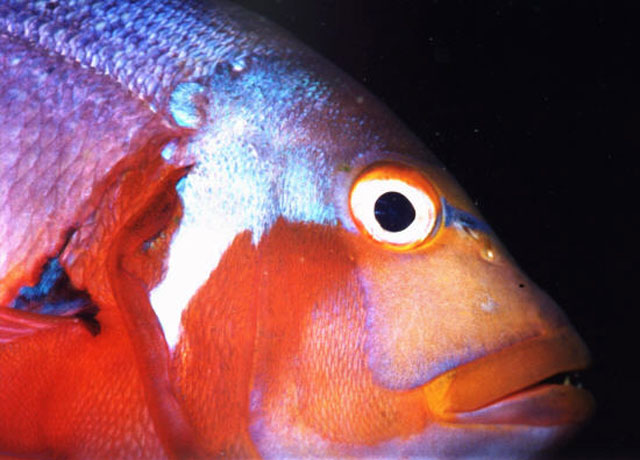| Sparidae (Porgies) |
| 50 cm TL (male/unsexed); max.weight: 4,200.0 g |
|
demersal; marine; depth range 1 - 100 m |
| Southeast Atlantic: northern Namibia to northern Natal, South Africa; also reported from Mauritius. |
|
Dorsal spines (total): 11-12; Dorsal soft rays (total): 10-11; Anal spines: 3-3; Anal soft rays: 7-9. Usually reddish orange in color, but sometimes blue with a white patch on the side (Ref. 3198). |
| Occurs above rocky bottoms in deeper water to 100 m but often caught from shore. Juveniles occur in shallow-water beds of seaweed where they feed on minute crustacean (Ref. 3670). Feeds on mollusks, crustaceans, worms and fish. Females transform into territorial males with growth (Ref. 3198). Voracious but sluggish, takes any bait. Good food fish (Ref. 3198). Sold fresh (Ref. 3507). It is parasitised by the monogenean Anoplodiscus cirrusspiralis on the fins and body surface (Ref. 124057). |
|
Near Threatened (NT); Date assessed: 02 December 2009 Ref. (130435)
|
| harmless |
Source and more info: www.fishbase.org. For personal, classroom, and other internal use only. Not for publication.

